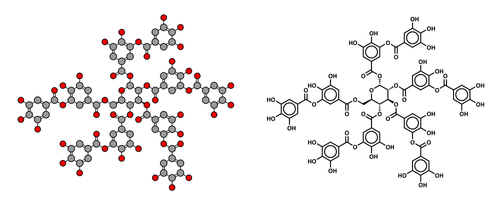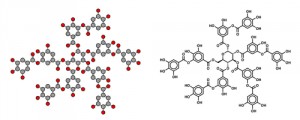Tannic Acid Revealed As Possible Cystic Fibrosis Therapy

 A new study on Staphylococcus aureus infection and cystic fibrosis (CF) entitled “Counteracting suppression of CFTR and voltage-gated K+ channels by a bacterial pathogenic factor with the natural product tannic acid“ was published on eLife by Yajamana Ramu, part of Dr. Zhe Lu’s group at the University of Pennsylvania in Philadelphia.
A new study on Staphylococcus aureus infection and cystic fibrosis (CF) entitled “Counteracting suppression of CFTR and voltage-gated K+ channels by a bacterial pathogenic factor with the natural product tannic acid“ was published on eLife by Yajamana Ramu, part of Dr. Zhe Lu’s group at the University of Pennsylvania in Philadelphia.
Cystic fibrosis (CF) is a genetic disease affecting various organs and is characterized by mutations in the cystic fibrosis transmembrane conductance regulator (CFTR) protein, which results in regular infective pulmonary exacerbations with opportunistic pathogens. Staphylococcus aureus (S. Aureus) is the most important cause of early infection in CF, secreting the pathogenic factor sphingomyelinase C (SMaseC) that causes hydrolysis of the sphingomyelin surrounding the CFTR protein, leading to the suppression of its activity. These bacteria, depending on the type of host, can decrease the critical residual CFTR activity or create a temporary condition similar to the CFTR deficiency, respectively, in patients with CF or patients without CF but with lung infection.
In this study, the research team screened a chemical library (Spectrum 2000) consisting of approved drugs and natural products, and used a fluorescence-based assay (Amplex Red) that involved a sequence of coupled enzymatic reactions. They found that tannic acid, a readily available and inexpensive natural product, inhibited the SMaseC activity, thus able to inhibit the activity of this enzyme in S. Aureus and in anthrax bacterium infection.
[adrotate group=”1″]
The researchers went on to evaluate the specificity of the inhibitory effect of tannic acid on SMase C. For this, they tested the tannic acid on the bacteria SMase D, which, like SMase C, specifically hydrolyzes sphingomyelin. The SMase D removes only the choline group and not the complete phosphocholine head group from sphingomyelin, leaving ceramide-1-phosphate instead of ceramide behind in the membrane, contrary to SMase C. Moreover, this research group has shown previously that SMase D also suppressed CFTR activity. In the present study, they demonstrated that tannic acid inhibits SMase C and SMase D but with different degree.
Tannic acid is a natural and inexpensive product and has been generally used in the food industry. This product was considered in 2013 as “Generally Recognized As Safe” (GRAS) by the US Food and Drug Administration (FDA).
Finally, the authors concluded that “treatment with tannic acid may improve the outcome in a number of bacterial infections.”







